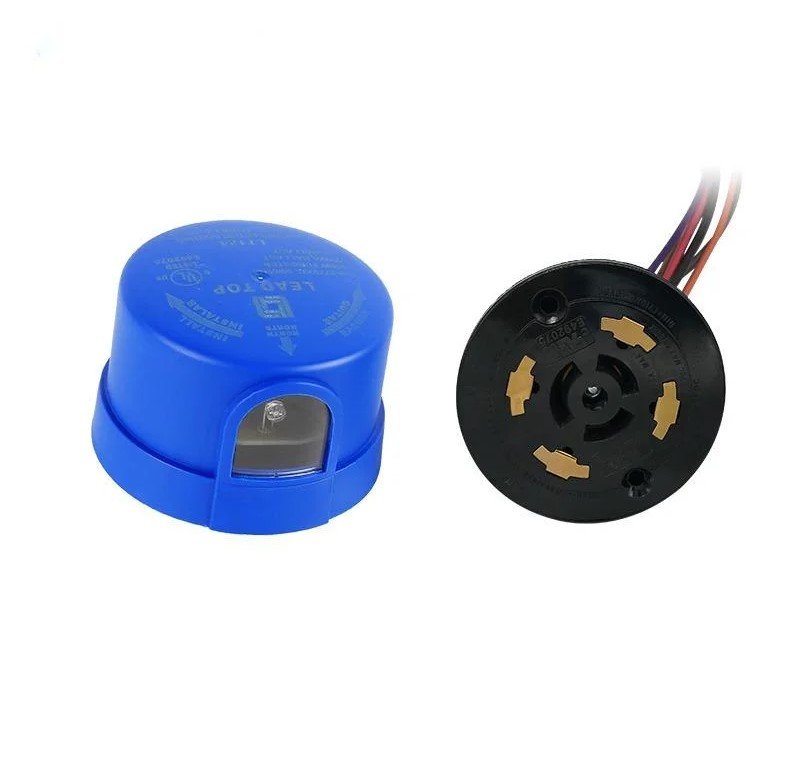Why Programmable Photocells Matter
Programmable photocells allow municipalities, lighting engineers, and OEMs to design custom ON/OFF schedules and dimming curves for outdoor lighting systems, Unlike traditional thermal photocells, programmable models can adapt to seasonal changes, urban traffic patterns, and energy-saving initiatives.
By leveraging smart programmable controllers, city planners can achieve energy savings, reduced maintenance, and improved safety. Cities around the world are upgrading their outdoor lighting systems, traditional photocells, which switch lights on at dusk and off at dawn, have served us well for decades, they’re reliable and easy to use. But they also lack flexibility.
A programmable photocell changes that picture completely. Instead of simple ON/OFF behavior, these controllers allow municipalities and contractors to design customizable lighting curves. Take a mid-sized European city as an example. Officials there introduced programmable units on 5,000 streetlights. Within the first year, they reported nearly 35% energy savings. At the same time, accident rates on pedestrian crossings actually dropped because the lights were brighter when people needed them most, more importantly, these systems support broader smart lighting trends.
- They can connect to IoT platforms
- Integrate with motion sensors
- Even adjust schedules remotely
In other words, they’re not just switches anymore, they’re part of a citywide digital infrastructure.

Key Advantages of Programmable Photocells
So, what sets these advanced devices apart? The advantages go far beyond simply turning a lamp on and off.
| Característica | Beneficio |
| Customizable LUX thresholds | Adjusts to local requirements so lights activate exactly when needed |
| Programmable dimming curves | Reduces unnecessary energy use and extends lamp life |
| Compatibility with LED/HID drivers | Great with modern LEDs and also HID and fluorescent setups |
| Surge and lightning protection | Guards sensitive circuits in storm-prone or high-voltage areas |
| Remote monitoring (optional) | Integrates with IoT for smart city control and data analysis |
To put it in perspective, think about dusk-to-dawn dimming. In a traditional system, every light is at 100% brightness all night long. With programmable dimming, brightness can drop by 30–40% after midnight. The human eye barely notices the difference, but the energy bills certainly do.
Another big advantage is lamp life, LEDs are already long-lasting, but when they operate at lower brightness levels for extended periods, their lifespan increases, Municipalities can push maintenance intervals from 6–7 years to 9–10 years, which means fewer replacement crews, lower costs, and less disruption on city streets.
From an environmental angle, reduced light pollution is also critical, parks and residential neighborhoods don’t need floodlight-level brightness at 3 a.m. By shaping light curves, programmable units help keep the night sky darker while still providing security where it’s needed.
Lead-Top Recommended Products
Not all programmable photocells are built the same. Punta de plomo has developed several models designed to meet the unique needs of municipalities, contractors, and fabricantes de equipos originales (OEM).
| Modelo | Tipo | Key Specs | Reflejos |
| LT134 | Long-Life Electronic | Load: 1000W/1800VA, Surge 640J, Zero-Cross Detection, IP65 | 8-year warranty, programmable dimming, supports LED/Escondido |
| LT154 | Heavy-Duty Electronic | Load: 1800W/1800VA, Surge 1280J, IP66, Zero-Cross | 10-year warranty, high surge protection, ideal for urban and industrial areas |
El LT134 is a great middle-ground solution. It offers programmability without being overbuilt, making it perfect for municipal tenders where cost control is important, it’s durable, comes with an 8-year warranty, and integrates easily with LED streetlight control systems.

On the other hand, the LT154 is designed for the toughest environments. Its higher surge protection makes it reliable in areas with unstable power, think of a coastal city or an industrial zone where lightning strikes and voltage fluctuations are common, the LT154 not only survives those conditions but also provides up to 10 years of stable operation.
What makes both units stand out is their ability to create customizable lighting curves. A city park can follow one dimming schedule, while a downtown avenue can follow another, all managed by the same family of controllers. This makes planning and maintenance simple for city engineers.

Practical Applications
Where do programmable photocells make the most impact? Let’s look at three real-world settings.
Urban Streets
In busy downtown areas, traffic peaks during early mornings and late evenings, But after midnight, pedestrian and car traffic drops, with a programmable photocell, brightness can be reduced to 60% without affecting visibility.
Parks & Recreational Areas
Programmable models let parks to dim lamps to a soft glow after 11 p.m., creating a calmer environment for late-night visitors, Some cities also combine programmable photocells with motion detectors. When someone walks along a pathway, the lights brighten temporarily, then dim again when the path is clear. This approach cuts energy use dramatically while still providing security..
Proyectos Municipales
Many municipalities now include smart lighting trends as a requirement in contracts. For example, tenders may specify that photocells must support programmable schedules, surge protection, and integration with smart city platforms. Lead-Top’s models meet these requirements by design, making it easier for contractors to win bids.
Here’s a quick side-by-side table comparing outcomes:
| Guión | Traditional Photocell | Programmable Photocell |
| Energy Use | 100% baseline | 65–70% baseline |
| Lamp Lifespan | 5–6 years | 8–10 years |
| Maintenance Calls | Frequent | Reduced by ~40% |
| Contaminación lumínica | Alto | Controlled / Reduced |
e numbers speak for themselves. Programmable photocells save money, extend equipment life, and make public spaces more sustainable.
Llevar
The future of outdoor lighting is not about more lights it’s about smarter lights, By adopting programmable photocells, municipalities, contractors, and lighting manufacturers can move beyond simple dusk-to-dawn switches and embrace customizable lighting curves, dusk-to-dawn dimming, and intelligent energy management.
For LED streetlight control, programmable models mean fewer outages, longer lifespans, and lower bills. For city planners, they mean compliance with environmental standards and a smoother path toward smart city integration. For communities, they mean safer, more comfortable streets and parks at night.
Programmable photocells are not just a trend, they are a foundation of modern smart lighting trends.
Want to explore how Lead-Top can help with your next project? Contact us today for catalogs, wiring guides, or product samples.
📧 ventas@lead-top.com
🌐 www.leaditop.com
Referencias:






